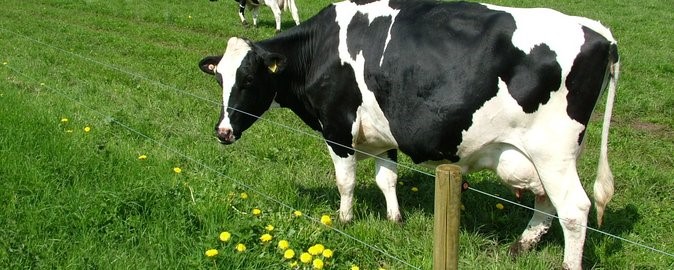Dairy cows fed grass with naturally high vitamin E content produce milk with more vitamin E than when feed contained synthetic vitamin E.
May 8, 2020

Vitamin E is a very important antioxidant and has importance to the immune response system.
According to an announcement from Aarhus University in Denmark, much debate has focused on the relative biological value of providing cows with natural vitamin E (RRR-alpha-tocopherol) and synthetic vitamin E (all-rac-alpha-tocopherol).
Today, it is generally accepted that the biological activity of synthetic vitamin E is overestimated compared to natural vitamin E in many species, Aarhus said, noting that experiments with rats have shown that the natural form of vitamin E has an activity 1.36 times higher than the synthetic form. However, doubt has been raised about whether these results can be transferred to other species.
Synthetic vitamin E consists of eight different forms of alpha-tocopherol, only one of which (RRR-alpha-tocopherol) is the natural form, Aarhus explained.
Natural vs. synthetic vitamin E for dairy cows
Under practical farming conditions, the simple way for supplementing vitamin E has been to add more synthetic vitamin E to the feed; however, only very small amounts of this end up in the milk, Aarhus said.
Aarhus senior researcher Søren Krogh Jensen with the department of animal science said, "We started wondering about the difference in the milk’s content of vitamin E at different feeding strategies. When feeding the cows synthetic vitamin E, not much is transferred to the milk compared to when feeding them with grass (or grass silage rich on natural vitamin E). When feeding grass, the milk gets a substantially higher content of vitamin E.
"In order to learn more about it, we conducted an experiment with cows receiving a single-dose injection in the cervical muscle with 2.5 g of synthetic vitamin E containing all eight forms, including 12.5% of the natural form of vitamin E. Subsequently, we studied the individual forms’ secretion into the milk over the next 11 days," Jensen continued.
The main result shows that 16.3% of the natural form was secreted into the milk, compared to 6.5% of the three synthetic dextrorotatory forms and only 0.7% of the synthetic levorotatory forms. In total, this means that 6-7% of the synthetic vitamin E is secreted into the milk, the researcher said.
"In this way, we have proved that mainly the natural form of vitamin E is secreted into the milk and that cows distinguish between natural and synthetic vitamin E. Thus, cows discriminate much more in favor of the natural vitamin E compared to for example rats. Therefore, the official conversion factor of 1.36 between synthetic and natural vitamin E does not fit very well with the cow’s biology," Jensen explained.
How much vitamin E the cow’s milk contains very much depends on what the cows are fed. "If you want to produce milk with a high content of vitamin E, it is important to choose cow feed with a naturally high content of vitamin E, like, for example, fresh grass or grass silage rather than maize silage. However, you also need to know that the cow has an upper limit as to how much vitamin E it can secrete into the milk. The higher the milk yield, the thinner the milk will become in relation to the concentration of vitamins and microminerals," Jensen concluded.
The research was published in Food Chemistry.
You May Also Like
.png?width=300&auto=webp&quality=80&disable=upscale)


